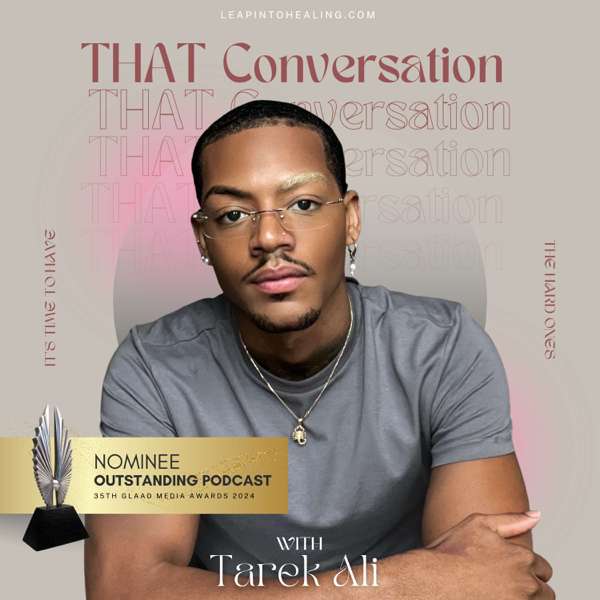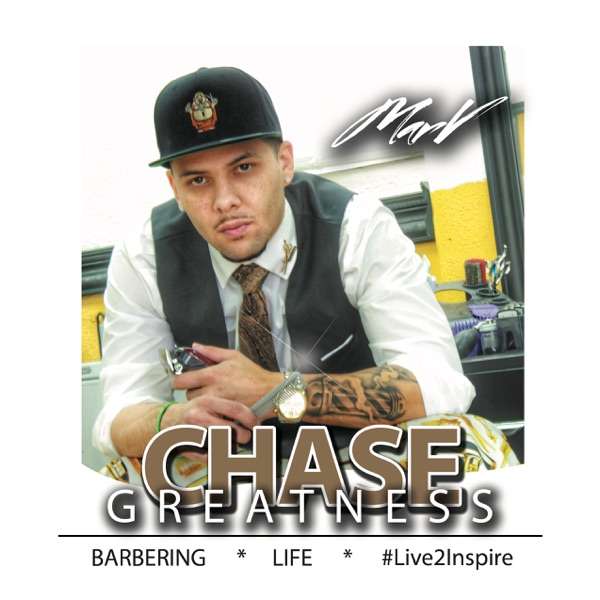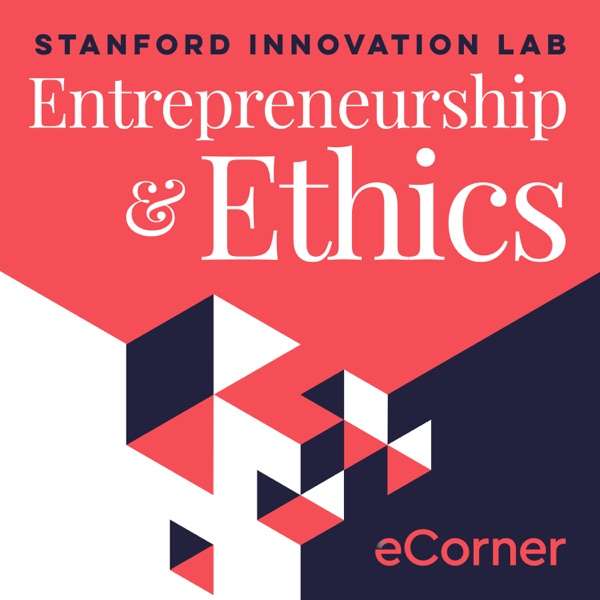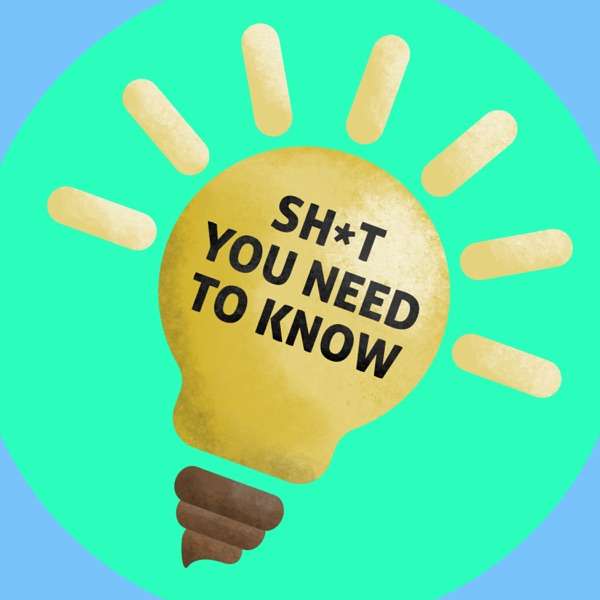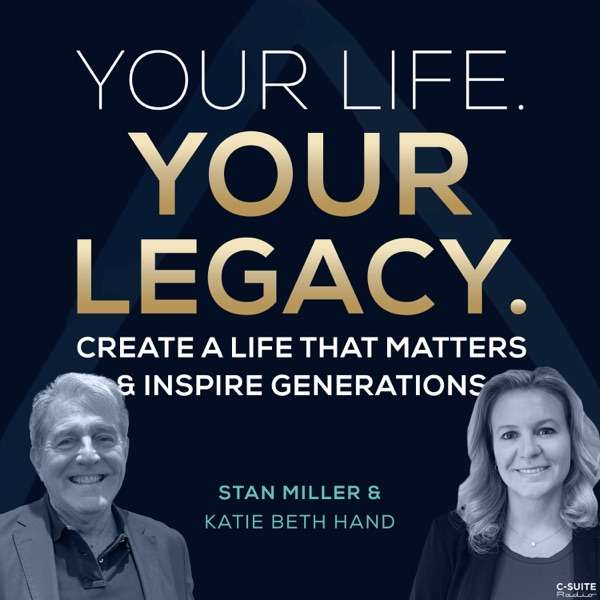Episode four of the third season of Free the Seed! the Open Source Seed Initiative podcast
Do you have questions about OSSI, intellectual property rights, or plant breeding that you would like answered on this show? Please share them with us through our listener survey at http://bit.ly/FreetheSeedsurvey
This podcast is for anyone interested in the plants we eat – farmers, gardeners and food curious folks who want to dig deeper into where their food comes from. It’s about how new crop varieties make it into your seed catalogues and onto your tables. In each episode, we hear the story of a variety that has been pledged as open-source from the plant breeder that developed it.
In this episode, we’ll be talking about carrot breeding in general, and two breeding projects in particular. First, Claire and Irwin will tell us about the Open Source Seed Initiative-pledged carrot breeding populations that they’ve developed at University of Wisconsin-Madison. They’ll explain how the UW-Madison Goldman Lab is able to speed up the seed production process to fit it into one single year using greenhouses and vernalization chambers.
Then we’ll hear from Petra about the project to develop ‘Dulcinea’, a new variety offered by Fruition Seeds, which Irwin and Claire have collaborated on. And all three of our guests will weigh in on the basic steps of any carrot breeding project.
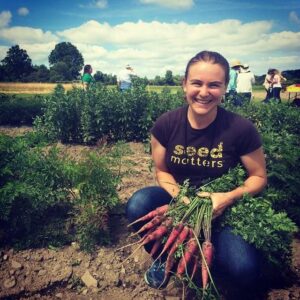
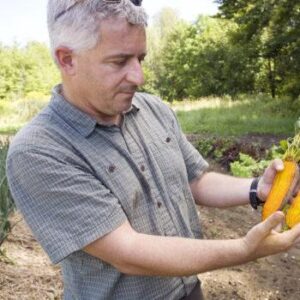
Left: Dr. Claire Luby (Photo credit: Matthew Dillon)
Right: Dr. Irwin Goldman (Photo credit: Matthew Dillon)
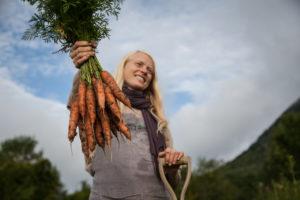
Petra Page-Mann with freshly-dug ‘Dulcinea’ roots (Photo credit: Lisa Barker)
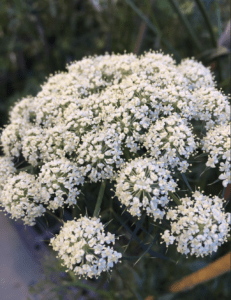
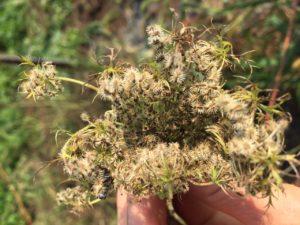
Left: Carrot flower-heads (umbels!) (Photo credit: Claire Luby)
Right: Carrot seed head (Photo credit: Claire Luby)

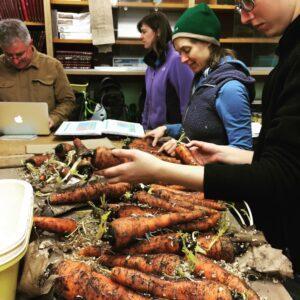
Left: Pollination cages in the field (Photo credit: Claire Luby)
Right: Carrot root evaluation in the Goldman Lab (Photo credit: Claire Luby)
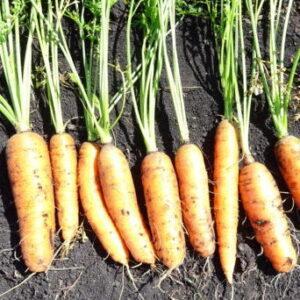
Wisconsin Open Source Composite Nantes-population that was used as the parent material for the ‘Dulcinea’ project
Episode links
- For folks wanting to get in touch with Irwin about potential future carrot breeding project collaborations, here is the Goldman Lab’s website: https://goldman.horticulture.wisc.edu/
- If you’d like to use the market classes as a starting point for a breeding project of your own, you can find information about procuring seed on the OSSI website. https://osseeds.org/seeds/
- You can purchase seed of ‘Dulcinea’ from Fruition Seeds at https://www.fruitionseeds.com/, or get in touch with Petra at petra(at) fruitionseeds.com for purchasing larger quantities of ‘Dulcinea’.
- The next Organic Seed Growers Conference, which Petra mentioned, is happening in February 2020. You can register through: https://seedalliance.org/2019/registration-open-for-the-10th-organic-seed-growers-conference/
- The Organic Farm School, which Petra mentioned, and which has been producing seed of ‘Dulcinea’, is located on Whidbey Island in Washington State. https://organicfarmschool.org/
- Nathaniel Thompson’s farm is Remembrance Farm, in Trumansburg, NY. https://remembrancefarm.webs.com/
- Organic Seed Alliance’s carrot seed production guide: https://seedalliance.org/publications/carrot-seed-production-quick-reference/
[gdlr_button href=”https://osseeds.org/wp-content/uploads/2019/12/S3E4_Dulcinea_Transcript.pdf” target=”_self” size=”medium” background=”#5dc269″ color=”#ffffff”]Download the Transcript[/gdlr_button]
Free the Seed!
Transcript for S3E4: ‘Dulcinea’ Carrot
Rachel Hultengren: Welcome to the fourth and final episode of the third season of Free the Seed!, the Open-Source Seed Initiative podcast that tells the stories of new crop varieties and the plant breeders that develop them. I’m your host, Rachel Hultengren.
This podcast is for anyone interested in the plants we eat – farmers, gardeners and food curious folks – who want to dig deeper into where their food comes from. It’s about how new crop varieties make it into your seed catalogues and onto your tables.
In each episode, we hear the story of a variety that has been pledged as open-source from the plant breeder that developed it.
Dr. Claire Luby and Dr. Irwin Goldman will be returning as guests today, and they are joined by Petra Page-Mann.
Dr. Irwin Goldman is a faculty member in the Department of Horticulture at the University of Wisconsin-Madison, where he has taught and led research in plant breeding for the past 26 years. His breeding program focuses on carrot, onion, and table beet.
Dr. Claire Luby conducted her PhD research at the University of Wisconsin-Madison in the Goldman Lab, and was the first Executive Director of the Open Source Seed Initiative.
Petra Page-Mann is the co-founder of Fruition Seeds, based in Naples, New York. Having grown up in her father’s garden, Petra believes each seed and each of us is in the world to change the world. Her passion, curiosity, love of food and love of people led her all over the world studying seed, song and culture worth celebrating. In 2012 she founded Fruition Seeds to share the seeds, knowledge and inspiration gardeners need to be more successful in the short seasons. If she’s not farming, she is singing, skiing, snuggling her dogs, hunting mushrooms or sharing a feast with a friend.
So in this episode, we’ll be talking about carrot breeding in general, and two breeding projects in particular. First, Claire and Irwin will tell us about the Open Source Seed Initiative-pledged carrot breeding populations that they’ve developed at University of Wisconsin-Madison. They’ll explain how the UW-Madison Goldman Lab is able to speed up the seed production process to fit it into one single year using greenhouses and vernalization chambers.
Then we’ll hear from Petra about the project to develop ‘Dulcinea’, a new variety offered by Fruition Seeds, which Irwin and Claire have collaborated on. And all three of our guests will weigh in on the basic steps of any carrot breeding project.
If you’d like to hear more about how the Open Source Seed Initiative came about, you can go back and listen to Season 1 Episode 2 to hear my conversation with Claire and Irwin about that history and the intention behind its establishment.
——————————————————————————————————————–
Rachel Hultengren: Claire and Irwin, welcome back, and Petra – welcome to the show!
Irwin Goldman: Thanks so much Rachel, thanks for having us.
Claire Luby & Petra Page-Mann: (unintelligible)
Petra Page-Mann: What a joy.
Rachel Hultengren: We talked a little bit back in Season 1 when we had Claire and Irwin on the show about the carrot populations that, Claire, you developed during your PhD, but I’d like to talk more about the details of how those populations came to be. So, can you remind our listeners what the goal of that project was?
Claire Luby: Yeah, so the goal of that project was to look at commercially-available carrot varieties, so we scoured seed catalogues from the US and got seed of as many different varieties as we could. And we wanted to look at the phenotypic, or the visual, diversity of all those varieties, and then also the genotypic diversity of all those varieties. And in addition, we were interested in the intellectual property rights that were associated with each of those varieties, and how that impacted our ability to use them or not use them for further plant breeding projects.
So we had about 140 different carrot varieties that we grew out and then grouped into different market classes and color types to make these populations.
Rachel Hultengren: And what are some examples of those market classes in carrots?
Claire Luby: Yeah, so carrot has a number of different market classes. There’s everything from the very long, skinny carrots that are used to make the baby cut-and-peel type carrots that have become very popular, all the way to little round Parisian type carrots and everything in between. So a lot of processing types where the carrot roots get very big and can be then cut into small cubes and incorporated into frozen carrots or soup or whatever. And then there’s fresh market types, so carrots that you might see at the farmers’ market. And so we looked at all of those different varieties that we had and sort of grouped them based on some of the different market classes that are sort of the most common. So the Nantes type carrot, which is the one we ended up using for the ‘Dulcinea’ project. And there are also a whole bunch of colored carrots, so we had groupings of purple carrots and white carrots and yellow carrots, as well.
Rachel Hultengren: And once you had all of those 140 varieties grouped into these different market classes, what did you do then?
Claire Luby: So we had grown them out with two different organic farmers in the Madison, Wisconsin area, and evaluated them all and sort of made these different groupings. And so then based on those categories, we let the carrots in each group inter-pollinate. So carrots are insect pollinated, so how Irwin’s plant breeding program works is that carrots are grown out in the summer, and then they’re stored in a cooler, or given a vernalization period to simulate winter for about 10, 10-12 weeks, and then planted out in the greenhouse. And all the pollination is done in a greenhouse. And so, in that greenhouse we grouped all those carrots, put a net over that whole group, and let flies in to cross-pollinate amongst all those different varieties.
Rachel Hultengren: So you put those cages on to keep the insects that you wanted in, and all the insects that you didn’t want out.
Claire Luby: Exactly.
Rachel Hultengren: And you touched on the fact that carrots need this period of vernalization in order to then be able to flower. So carrots, like many other root crops are biennial, which means that they need two seasons of growth before they flower. Claire, does that make biennial crops, or carrots, more difficult to work with than annual crops, or more complicated?
Claire Luby: Yeah, definitely. As you mentioned, carrots are biennials, and we’ve actually, humans have actually selected them to be biennials, because we want that really succulent, juicy root as the vegetable. So the plant produces that root, the carrot vegetable, in the first season of growth, and it’s also storing energy for the plant. So in the second year of growth, that plant will produce a flower, but the root will actually then get very woody and hard and not very good to eat. So from a vegetable perspective, that’s why we’ve selected carrots to be biennials, whereas their wild relative, Queen Anne’s Lace, is actually a winter annual, so it produces flowers within a single year. But it does make them a challenge to work with, in terms of needing either to store those roots without having them rot for the whole winter, and then planting them out a second season before you can get seed, or having some kind of set up, as we are fortunate to have here, where we can use a greenhouse to do some of those pollinations. And I’m sure Irwin can talk a little more about some of the challenges associated with a biennial crop.
Rachel Hultengren: Irwin, would you like to weigh in?
Irwin Goldman: Yeah, I mean I think Claire did a great job of sort of laying out the basic framework for how we do the breeding. And you know, on the one hand, you might say Madison, Wisconsin is not the ideal place to breed a biennial crop. Because we really, we have this wonderful growing season, but we also have many, many months of very cold weather. So we do use that vernalization chamber to chill them, to make them competent to flower, and then we use the winter greenhouse. And we’re really lucky that we have access to some nice greenhouses on campus. Were it not for those greenhouses, it would really take two full calendar years to go from seed to seed. And so if one wanted to do their own carrot breeding without the use of a winter greenhouse in an environment like this, it would be super challenging. Even so, all of that said, it still really pushes at the boundaries of a single calendar year to go from seed to seed. Because the process of flowering, pollination, and then seed set and seed ripening really pushes us all the way into the middle to late part of April here, and that’s about the time when we want to be packeting seed to go out in the field, possibly in May. If you were working on an organic carrot production that was planting later in the season, which is typical here, if they were say planting in mid June or even late June, the pressure is a little bit less, because we can work it so that seed is mature by May, and then we have a little bit of time. But nevertheless it is a challenge. And I guess I would say also that breeding biennials involves a lot of handholding and a lot of babysitting the plant materials, because of the long generation time, the need to handle them many, many times throughout their lifecycle.
Rachel Hultengren: What are the different time periods when they need most of that hand-holding?
Irwin Goldman: Yeah, so we usually direct-seed carrots, of course, because I don’t think anybody… I’ve never heard of anybody having good results with transplanting something like a carrot. The root doesn’t like that, and so they’re direct-seeded. And they, of course, are not very competitive early in their growth. And so weeding is a huge issue, and so we spend a lot of time taking care of carrot plots early on, weeding them. And then we usually over-seed, so we thin them. So there’s quite a bit of work to do early in the season. Once the canopy’s up, and the carrots are growing, there’s a little bit of a lull period. But harvest is quite labor-intensive, and so we dig – and you really need to dig with a pitchfork or a shovel so that you can loosen the soil around the roots, pull them up by their tops, lay them down in the row and then, really, probably get down on your hands and knees and look at all of the carrots. There’s a lot of work… You know, you could look at a piece of land that has some pretty dense carrots plots and realize that it will take you a very long time to get through everything that’s there, because each carrot not only has to, each plant has to be loosened and pulled, and then if you’re gonna select it, you have to cut the tops off and bag them. So the harvest period is quite labor-intensive. There’s a period of time where you would then bring them to some vernalization chamber, some cold room where you’d be packing them.
We tend to pack in wood shavings. We’ve, over the years, found that a sort of a simple system but a very reliable system for storing carrot roots for anybody who wants to make seed or breed them is to use wood shavings. And we’ve recently begun buying them from pet food stores. And so we buy large bales of wood shavings – pine or cedar work fine – and store the carrot roots in paper bags, very similar to a paper grocery bag, with wood shavings in the bottom and roots that are then placed in that bag. And the bag is then rolled up and placed inside of a fairly thick plastic bag. And the plastic bag should be really sturdy, and closed with a twist tie, but holes should be poked into the plastic bag in order to allow the roots to breathe during vernalization.
So there’s a fairly labor-intensive piece of getting the carrots out of the field, bringing them into those bags and into a vernalization chamber. At that point you have ten weeks, or, I mean, you could probably do it in less, but we do it in ten to twelve weeks of vernalization, at about, between… you wouldn’t want to go any lower than 5 degrees Centigrade. Certainly 10 degrees Centigrade is probably okay as well. And then there is a very labor-intensive period when you need to fill pots, and plant those carrot roots that you select in those pots. Before you do that, you usually pull the carrots out of vernalization and you cut them open. Here, there’s a period we call “Cutting” where we’re really selecting the traits that we want, we’re looking at the interiors, we’re tasting them. You can’t slice the whole carrot apart; you can cut off a chunk of the root, say the bottom third of the root or the bottom half of the root, and you could base some of your selections on that. You could look at the interior qualities, and the color, and all the different traits that you’re interested in. And then you would take the remaining chunk, the remaining steckling, which would have the meristem, and that’s what’s going to get planted in the plot.
Rachel Hultengren: And the meristem is just the growing point of the plant?
Irwin Goldman: Exactly, exactly – the top growing point. Because in the field you’ve trimmed that back so that there’s maybe a half inch of green tissue towards the top of the carrot root near the crown. And that’s dried up after the vernalization period, but the bolt, or the flowering stalk, is going to emerge from that meristem, from that growing point. So once you get the carrots planted in pots in the greenhouse, they need to be staked, so there’s a lot of maintenance to keep the plants sort of trained up. And then when the carrot starts to flower, you will put a cage over that carrot plant and whatever other plants you want to pollinate. Now, in the case of this particular project, we can use a large cage, sort of like a tent that one might see out in the field for putting plants in for pollination, because we might be pollinating many plants together. And in that case we’d be essentially putting a tent over a number of pots on a greenhouse bench.
You could also, if you wanted to cross just two plants together or three plants together, you can use what we call a ‘pillow cage’. And a pillow cage is a metal frame with a piece of cloth, a tubular piece of cloth fitted over the metal frame. And it is maybe about three feet long, and about one foot in diameter. And that then fits over the flowers of the plants that you wish to cross, and it gets sealed on the top and on the bottom with a twist-tie. The top also has an opening with a plastic tube that has a cork in it, and when you take the cork out you can introduce anything you want into the pollination tube. And in this case, we purchase fly pupae, and we put the fly pupae into the tube, and those hatch and then pollinate the carrots. So you can imagine that there’s quite a bit of work to do setting up the cages, whether it’s a pillow cage or a tent. Then after you’ve staked up your plants, you put up your cages, and then you have to be putting flies in on fairly a regular basis, because the flies don’t last that long. We tend to put flies in at least once a week into these cages, for a period of at least 6 weeks. So that’s quite a bit of hand work to introduce flies into those cages. At a certain point, after pollination is complete, you’ll be able to take the pillows off or take the plants out of the cage, and just let the seeds mature naturally, and that’s… that can be really good for seed dry-down and eventual seed harvest, which is also a very labor-intensive process. So compared to an annual plant like a bean or a tomato or a pepper, there’s quite a bit going on in this twelve month period to go from seed to seed.
Rachel Hultengren: Yeah, it sounds like it’s quite a labor-intensive process.
Irwin Goldman: It is. And it’s fortunate that we can fit it into a year, especially because we’re selecting at the time of root harvest, and then selecting after vernalization, and then going through quite a bit of detailed work during pollination that wouldn’t be found in an annual crop. All of those things would be compressed usually into a one phase.
Rachel Hultengren: Mmhmm. So at UW-Madison, you have individual roots in pots on greenhouse benches to be able to fit them all into a warm greenhouse in the winter to keep the time really short, so that you’re able to get from seed to seed in that calendar year. And Petra, I imagine that out in Naples you are waiting to plant those roots out until the spring of the next year in your fields, and I’m wondering – what does a field of carrots look like when it starts to flower?
Petra Page-Mann: One of my favorite things. People love Queen Anne’s Lace flowers, and I’m quite there with them. They’re so beautiful, and I love when people ask if we have Queen Anne’s Lace seed in packets that we can share with them. And I say, “Well, we do and we don’t. We do but we don’t. But if you just want to get carrots from the grocery store that still have greens on them, and then plant those, you’re welcome!” But they look like just… a field of carrots going to seed looks like this tall, beautiful waving field of bright silver Queen Anne’s Lace. So exquisite. You know, often five plus feet tall, depending on how rich the soil is. So they’re, they look nearly identical to Queen Anne’s Lace when they flower.
Rachel Hultengren: And what does it look like once they go to seed?
Petra Page-Mann: Remarkably, very similar to Queen Anne’s Lace going to seed. And I love picturing those outer edges of the umbel starting to curl up, and they almost form this cup, this challis of like bright gold, brown brittle seed heads and bracts. So there’s just a few hundred seeds all in a great big primary umbel at the very top of the plant, and yeah – these massive, beautiful cups of seed.
Rachel Hultengren: An umbel is the flowering structure of plants in the family that carrots are in. What does an umbel look like, exactly?
Petra Page-Mann: I think ‘umbel’ and ‘umbrella’ have some relationship. So the Umbelliferous – the Umbel family – they have kind of these umbrella-shaped flowers, but they’re more like an inverted umbrella, so instead of draining water off they, like, their edges lift up toward the sky. But it very much depends on the flower, and in the case of some of them, the umbrella will invert as they go from a wide open, beautiful flower to the seed head that is curling up and in. So yeah, if it looks kind of like an umbrella, there’s a strong possibility that you’ve got a plant in the Umbel family. And there may actually not be a connection between ‘Umbelliferous’ and ‘umbrellas’ in our language, but I sure hope there might be.
Irwin Goldman: If there’s not, there should be. It’s a great way to think of it.
Rachel Hultengren: So, Claire, once you had the cages over those individual market classes in the winter greenhouse, what happened after that point? How many populations did you end up with, and what did you do with them from that point on?
Claire Luby: Yeah, so we had 8 different populations, and about 200 plants in each population, so it was quite a lot of plants to take care of, and quite a lot of seed. So we let those flies and let them cross-pollinate all of those plants, and then we took that seed and mixed it all together, and then we actually planted it out again the following summer. And then we did a whole ‘nother round of crossing. So in that case, we actually did the pollination outside, so this was over the course of three different summers. So the first summer, we grew all of the commercial varieties, that winter we let them all pollinate into these eight different populations, and I should say that these were the varieties that were available to use in breeding. There were some that had various restrictions on whether or not you could use them for plant breeding or seed production, so we did not use those varieties. And then we planted that mixture of seed the second summer, made some observations, and selected some of the best roots out of those. But also made sure to select a wide variety. So we got rid of things that had disease, or had bad characteristics like cracking, or disease or something like that, and then… but we wanted to make sure that these were really breeding populations and that they captured a lot of that variation still, and so we did leave in a variety of roots. And then we let those to vernalize all winter, and then planted them out to do a larger seed increase of each of those eight populations that following summer, so the third summer we actually did the seed production outside, and that was in the big cages that Irwin mentioned out in the field. We still have a lot of Queen Anne’s Lace in this area, as I’m sure Petra does as well, and we wanted to make sure that flies or bees or other insects that might have been on the Queen Anne’s Lace flowers were not then moving that pollen onto our seed production plants. So that was sort of the process that we went through for that.
Rachel Hultengren: So Queen Anne’s Lace and carrots can pollinate one another – they’re the same species?
Claire Luby: They are the same species, so yeah, they can pollinate one another.
Rachel Hultengren: So if anybody is interested in doing a carrot breeding project, it’s really important to know whether you have flowering Queen Anne’s Lace around in your field. And how far does it have to be away from your carrots for you to not have to worry about it?
Claire Luby: Yeah, so it sort of depends on a few factors. So you want to know what the timing is of the flowering. So if you’re able to plant your roots early enough, sometimes they can flower before there’s actually Queen Anne’s Lace flowering, although again it’s all dependent on the season. Otherwise, you could go and remove it, though again if you miss some, you might have some crosses there. So really up to a couple of miles potentially around. Insects could travel that far. If you’re doing a breeding project, and you don’t have Queen Anne’s Lace maybe, like, right next to where you’re doing your carrots, it is pretty obvious to notice when there has been a cross in the next generation. So if you’re not selling the carrots for seed, and you’re able to do that selection on the roots, you would know if you had had a cross and you could rogue that out if you’re doing selection on that. But I don’t know if Irwin and Petra have other comments. I think that if you’re doing a breeding project, you could be a little less, or a little more relaxed on how far your seed production would have to be from any potential Queen Anne’s Lace.
Rachel Hultengren: Irwin, what would it look like if there had been a cross between the carrots that you had been growing for seed and Queen Anne’s Lace in the field?
Irwin Goldman: Yeah, so that’s a good question, you know, because it won’t show up immediately. You won’t know until you plant that seed out. And most of the wild traits are dominant, so they will show up immediately in the farmer or gardener’s field. And this is quite alarming, and it does occur quite often due to the ubiquity of Queen Anne’s Lace, as Claire pointed out. So you will see a dominant trait like bolting, for example. The plants will go to seed during carrot production. And of course this is a really unfortunate trait for anybody who’s trying to grow a carrot to eat, because bolting makes them completely inedible. They get really woody, and it’s unfortunate. But that’s a trait associated with the wild carrot, and it’s dominant. Another one is white-rootedness, or lack of pigment, and so you will often find carrots that are unpigmented or really poorly pigmented because of a cross to a wild carrot. So, while most seed companies do an incredible job rogueing the wild carrots and making sure that there’s no contamination, every once in a while, you will see a very very low frequency of these kinds of plants, even in a cultivar.
Rachel Hultengren: So carrots are an outcrossing species, or a cross-pollinating species, which means that…
Irwin Goldman: Correct.
Rachel Hultengren: …a single carrot needs to be pollinated, or will be pollinated, by other carrots around it. And in addition to that meaning that you need to have quite an isolation distance – or isolation timing – from Queen Anne’s Lace, that also means that if you’re producing carrot seed on your own farm, you need to make sure that the varieties are kept separate also.
Irwin Goldman: Yeah, if you were producing multiple varieties, that’s absolutely right – you could have contamination there as well. And I should say, too, as you pointed out, it is a cross-pollinated species, and it does predominantly cross-pollinate, but it can self-pollinate as well. And so if you were increasing the seed of an open-pollinated cultivar, you could expect that some of the progeny would result from self-pollination of individual plants, and some of the progeny would result from cross pollination.
Rachel Hultengren: Mm. Thanks for the clarification. Claire, once you had those several generations finished, and you had these eight populations identified, what was your goal with those eight populations? What was your hope for them?
Claire Luby: Yeah, I think our goal was really to make them available to people. We released them under the OSSI pledge, and so we had that goal from the beginning, sort of looking at ‘What is the diversity present here? What’s restricted from use, and what isn’t?” And then using the carrots that were not restricted, making these populations that we then wanted to release under the Open Source Seed Initiative pledge to represent the available diversity and make that available to people.
Rachel Hultengren: How did you then pledge those as open source?
Claire Luby: So after we made these populations, we had to work with the University of Wisconsin to actually release them. So how it works is – at a university, if you receive any federal funding, you have to work with your technology transfer office to release a new plant variety. And this is under the Bayh-Dole Act of 1980. So we had to work with WARF, which is the Wisconsin Alumni Research Foundation, and they are the technology transfer office for the University of Wisconsin. And so we worked with them to release these under the OSSI pledge. And they were actually very helpful in this process, and happy to have us release in this way. And once they were like, “Yeah, we’re not going to pursue any kind of intellectual property rights on these, these are yours to distribute under the OSSI pledge as you wish”, and… but we had also to go through the university, because the university technically owns the seed that we made. And so we had to get their permission as well, to release them under the Open Source Seed Initiative pledge. So it was a whole process.
Rachel Hultengren: And once they were pledged, you and Irwin have been able to offer those up as source material for new breeding projects that people might want to take on, using one of those market classes that you’ve defined.
Claire Luby: Mmhmm, yeah, exactly.
Rachel Hultengren: And that brings us to this ‘Dulcinea’ project that you’ve worked with Petra on. So Petra, can you tell us about the conversations that you’ve had that led you to wanting to work on this project?
Petra Page-Mann: I’d love to. I’d love, love, love to. It sends shivers down my spine.
Irwin Goldman: (Laughs)
Petra Page-Mann: As a backdrop, I just love to eat, and I love eating with people, and farmers have always been some of my favorite people on the planet, for very selfish and more visionary purposes. But I love the capacity that we have to grow food for ourselves and for each other, and that capacity to, kind of, transform the world around us and transform ourselves in the process. So I was really interested in gardens my whole life, and growing plants my whole life, and it was in my early 20’s that I realized, “Oh, wow – seeds can be patented?” I was working on a biodynamic farm out in Oregon, and I just… my whole world kind of turned on its head. And so I’ve been really interested in seed for a long time, but particularly how we talk about seed, and share our seeds. And how new varieties are being developed – or not – and shared – or not – is a very deep passion and interest in my life. So I was really, really psyched to meet Nathaniel Thompson, who grows the better part of a hundred acres of organic vegetable outside of Ithaca (New York). And he grows many, many acres of carrots. And we had worked with him on a lot of other crops, creating open-pollinated varieties, selected on his farm, that were way more vigorous and robust and uniform, but still with ludicrous quantities of diversity, genetic diversity in them.
And so Nathaniel, one day, we were standing in his high tunnel and looking out at like, (laughs) more or less five acres of ‘Bolero’ carrots. And he was lamenting how he, as a biodynamic grower, organic grower, that he has trialed all these different varieties across the years, and that he is still relying on this very conventionally produced F1 hybrid owned by a very large seed company. And they had just, Vilmoran had just, the owner of that variety had just come out and shared that they were not going to offer ‘Bolero’ organically, although, you know, it’s such an important variety across conventional and organic alike. So he was lamenting this, and he was like, “I know that carrots are a little tricky here in the Northeast, but do you think you could give it a try?” And I very much have… (laughs) I’m learning how to say, “No”, very slowly and rather painfully. And this was one of the cases where I just said, “Well, yes. I don’t know how” because of all of these Queen Anne’s Lace constraints that we’ve already been talking about in this podcast. But I said, “Yes. Let’s begin to work on this, Nathaniel.” And I believe that was 2013.
So we very shortly afterward called Irwin, who we had just been introduced to, and Claire. And we were like, “What do we do? How do we… I have a sense of, you know, I’ve read about Frank Morton and Ken Greene, and these, like peppers and other varieties, dehybridizing them, but this seems like a more complex issue”. And when Irwin mentioned OSSI and all of the market class that they’ve been cultivating and making publicly available, I just… listening to Irwin talk about this possibility felt like this immense veil being lifted of this incredible way forward, that wasn’t clear and wasn’t necessarily easy, but was immensely possible, compared to my prior imagination of it.
Rachel Hultengren: Mmhmm. It sounds like ‘Bolero’ was a really important variety to Nathaniel, despite the fact that it wasn’t available as organic seed, the way that he would have wanted it to be. And I’m curious about a couple of things. One, what is really great about ‘Bolero’? What is it that makes it a variety that a lot of organic growers are still relying on, despite the fact that it’s not available as organically produced seed, and then secondly – why is it important for organically-certified growers to have organically produced seed of the varieties that they want to grow?
Petra Page-Mann: Mmm. What a grand question, Rachel. So the two questions are: why is ‘Bolero’ significant as a variety? And the second – why organic seed is important for organic growers? So the first – ‘Bolero’ is an amazing carrot. It is so vigorous. It’s one of the things that I continue across the years to be in absolute awe over. Where carrots are… they don’t compete with weeds on any kind of level. They just germinate slowly, and then their leaves are very sparse, especially to begin with. So ‘Bolero’ just rocks it. It just gets out of the ground really quickly, and then puts on leaves, faster than any variety than I’ve ever seen. So that vigor alone makes it more competitive both on conventional and on organic farms. So that vigor alone is kind of, at least as far as what I’ve heard from Nathaniel and other organic growers that grow it, it’s just, that’s what keeps it head and shoulders above the rest.
Otherwise it’s a classic Nantes type. So it’s what people classically think of as a carrot, and it’s good. It’s not bad. It’s not nearly as delicious as ‘Dulcinea’ and other varieties bred for flavor specifically, but for, especially, an average American that is used to carrots coming in a bag in a grocery store, it’s a carrot. So it’s really that vigor, and it’s a great storage carrot, as well. That carries it through. So even though organic growers would love to have organic seed, and perhaps more flavor and other traits, it’s that early vigor that is hard to compare anything else to.
And the second part of your question, why is organic seed important? Oh my goodness. It’s kind of like language, and if your native tongue is Spanish and everyone is speaking to you in English, you can learn English very well, but it’s really nice, all of a sudden, you just feel at home when you’re among Spanish speakers. And it’s kind of similar with that organic mentality and the lineage, the legacy of an organic variety as well. If the ancestry of a plant has grown in soil and is foraging for nutrients in compost or a more organic fashion rather than just expecting the miracle of manna from Heaven of chemical NPK to be right there… it’s a whole different world than if you actually have to compete with weeds, and you can’t rely on RoundUp to just spray back all your neighboring weeds and help you be quote more competitive. It’s a whole different thing.
And so the same way that my health is related to my parents’ health and my grandparents’ health and my great-great-great-grandparents’ health, the same is true for seeds and all living things. And so organic seeds have additional generations of growing and competence in these organic conditions. And if there’s additionally organic-bred varieties, then you know that that legacy and experience, that genetic resilience and diversity in that seed is that much more primed to thrive in an organic condition, in an organic farm. And you know, it’s like, organic farms can totally grow conventional seed, and Spanish speakers can totally speak English, but oh man, when you’re speaking your native tongue, and that seed has actually been thriving in this language and in these conditions for generations, there’s a richness there that is hard to compare.
Rachel Hultengren: So once you had connected with Irwin and Claire, and they told you about these populations that we’ve heard from them about, what did you do next?
Petra Page-Mann: Well, Claire had actually, brilliantly, she had already crossed ‘Bolero’ with the OSSI Nantes population. So they were already one generation into this work when I knocked on their door and said, “Hey guys, we have this wonderful collaborator that really wants to do this, and we don’t really know how. But I suspect you might know how!” So yeah, hats off to Claire for having that insight and inspiration and being on it. So we basically just said, “Yes, we are so in.” and offered our space, our farm as well as Nathaniel’s farm as kind of part of the laboratory, part of the experiment where we would grow out roots and make selections, and then we would send roots, the stecklings, the carrots themselves back to Irwin and Claire for them to be vernalized in Wisconsin, and for Irwin to grow those winter seed populations, which was just such a gift to turn this biennial process into essentially an annual process without circumventing the inherent biological needs of the plants and of future generations of farmers growing out these seeds. So we were able to effectively do the same work in half the time that we would have otherwise been able to do out in the field with a biennial.
Rachel Hultengren: That sounds like a really powerful collaboration. So Claire and Irwin sent seeds out to you and Nathaniel in the Northeast, and then you would grow those seeds to roots, make your selections, send them back to Wisconsin, they would grow those roots out to seeds and send the seeds back again to you?
Petra Page-Mann: Exactly. It was a revolving door for a number of years. And I’ll just… I just want to put in a plug for public plant breeding, and for Irwin and Claire as well in their visionary-ness. But I’m just continually in awe that public plant breeding exists, that it was something that our ancestors thought was important. And especially as industrial interests have taken over our food system and our seed system, that public plant breeding continues to stay alive. And even though it’s funded at a fraction of what it was a century ago, that people like Irwin still exists and are able to offer these resources for the public good, and whether it’s our collaboration with Nathaniel and the University of Wisconsin for ‘Dulcinea’, or all of the watershed, the seedshed of work that Irwin and Claire have created among others with OSSI, it’s a tremendous legacy of openness and generosity. You know, when Khalil Gehbran says, “Work is love made public,” I think public plant breeding and OSSI specifically just really embodies what that work being love in public really looks like in the 21st century.
Rachel Hultengren: Irwin, this example of ‘Dulcinea’ being a collaboration between the public university and a seed company – what makes that a special collaboration from your perspective?
Irwin Goldman: Well, I feel… I was very inspired and grateful for Petra’s words and her sentiments about these relationships, because I feel like that’s why we were created, I think that’s why the landgrant system was developed, was to… especially this very unique relationship that landgrant colleges of agriculture have with their stakeholders. And the idea that we would not only develop useful germplasm that farmers and seed companies and gardeners could use, but that we would also collaborate and cooperate and share germplasm and share projects and information. I feel like that’s our mission, to do the public good. And so this project with Fruition, and with Petra and Matthew and their farmer stakeholders, was to me like a perfect illustration of why we’re here. And that doesn’t mean that we wouldn’t collaborate with larger seed companies, or with other people around the country or around the world. That’s really what… I think we’re a utilitarian resource for so many different people to use. And as our situations have changed in public higher education have changed over the decades, I think it’s become more challenging to do some of those projects, but I feel inspired to spend what time and energy I have to try to do them, because I think this is one of the beautiful niches that we can fill.
Rachel Hultengren: So Petra has mentioned that Claire, you had the vision to cross ‘Bolero’ with the Nantes population that you had, the Nantes market class population. Was that something that you had heard people might be interested in? Or what inspired you to make those crosses in advance of –not maybe knowing that it was in advance of this project – but before this project got started?
Claire Luby: Yeah, ‘Bolero’ is, as we’ve mentioned already, a very popular variety amongst organic growers. And it was one of the varieties that was being included in the Nantes population, because even though it is a hybrid, it was still available to use in breeding. And so I think I had just, I had extra ‘Bolero’ roots, and I was like, “You know, maybe we should just make this cross with the population.” So we knew that ‘Bolero’ was one parent, because the seed was harvested off of ‘Bolero’, but we didn’t actually know what all the other potential parents were because it was being crossed with all these other roots. So we didn’t exactly know where the other half came from.
——————————————————————————————————————–(Music – ‘And So Then’, Lee Rosevere)
Rachel Hultengren: We’re going to take a short break; when we come back, Petra will tell us about the process of taste-testing for ‘Dulcinea’.
This is the last episode for the season, but we’re already planning for the spring. Do you have any questions about the Open Source Seed Initiative that you’d like answered in this podcast? Or about intellectual property rights, or plant breeding generally? Did you come away from any of the previous episodes with burning follow-up questions for the plant breeders that have been guests on the show? If so, please take a few minutes to share them with us through our listener survey at http://bit.ly/FreetheSeedsurvey. They might make it onto a future episode!
Are you friends with farmers, gardeners, or anyone who’s interested in where their food comes from? If you’ve enjoyed listening to this episode or any other episode of Free the Seed!, consider telling a friend about this podcast.
(Music – ‘And So Then’, Lee Rosevere)
——————————————————————————————————————–Rachel Hultengren: Petra, when you were growing out the roots and harvesting them, and making selections before you sent those back to Wisconsin, how were you evaluating the traits that were important to you in this project?
Petra Page-Mann: Oh, it was so fun and there were a lot of people on the farms – on our farm and Nathaniel’s farm on those days. So we would make all our selections with Nathaniel first and foremost, because we wanted to make sure that all those agronomic qualities that he looks for as a market farmer are… that’s the central pillar of what we’re selecting for. And then we would, we were… speaking totally selfishly (laughs), I wanted to make sure that they were as delicious as possible (laughs). But we would have, you know, a number of people on the farm. We would invite friends, other farmers. We would invite people – chefs – in the food system to just come and taste. So we would, on those days that we were doing taste evaluations, which is so fun… And to back up, when you’re making those taste selections, like Irwin mentioned earlier, you just need that apical bud in the meristem of the carrot, right where those green shoots are going to come out of the top. You don’t need 100% of that starchy root underneath to grow a carrot the next season. So that means that we could, we would cut off basically the bottom third and be able to taste, and also look at, you know, the internal color and the concentric rings and just look at, kind of, the texture from there as well. But we were mostly, from there, inviting people to come and taste (laughs), which was so fun. You know, we’d do the initial agronomic selections, but then once they all looked very visually, phenotypically, like what we would want, then we got out our knives. And we had three buckets. We had one bucket that said “Heaven” and another bucket that, pardon me, said “Hell” and then a third bucket that said “Purgatory”. (Laughs.)
Irwin Goldman: (Laughs)
Petra Page-Mann: And if a carrot was absolutely divine, so sweet, nothing but glorious crunch, no pith, it went straight into Heaven, if you will. And then if a carrot – carrot reverts really quickly back to their bitter ancestry, which is really fun to taste and interesting, but you definitely don’t want to be selecting for those – and so those would go, those, like piney, more like turpentine, really more bitter roots would go into Hell. And then if there were some that were kind of on the fence, we would put them in Purgatory, just in case. We wanted to make sure that we were sending Irwin and Claire really robust numbers, so that the populations would be healthy. And so we wanted to be sure that if we wanted to pull some from Purgatory to Heaven, to maintain the population, so we had that option. So that’s why Purgatory existed. But we never, never ended up needing to send any roots from Purgatory, upgrading them to Heaven. But that was a really fun project. So yeah, when we were actually making the selections, we would invite people to the farm, all kinds of people. Because we really, we… in the same way that, when (laughs) Nathaniel asked if we could dehybridize ‘Bolero’, and Matthew and I looked at each other and we were like, “Yes, and we’re calling Irwin on our way home, we can’t do this alone.”
Irwin Goldman: (Laughs)
Petra Page-Mann: We also, you know, at every level, we can’t do this work in our own little silos and do this work alone. And it’s just so much more fun to have a party and eat carrots with friends. So it was… I feel really wonderful about all the generations of those carrots being tasted with lots of different people across the years. (Laughs) So I guess I’m saying that it’s not just me who says they’re delicious, even though I’m a proud mother who thinks that her babies are beautiful and brilliant and delicious (laughs).
Rachel Hultengren: So you did those taste testing evaluations and agronomic trait evaluations every year since 2013, did you say?
Petra Page-Mann: Yeah, every year, which has been such a privilege, again, that Irwin and Claire were able to transform this biennial process into an annual process so we were able to make all of these leaps in variety development in half the time it would have otherwise taken us.
Rachel Hultengren: Fruition Seeds started offering ‘Dulcinea’ seed last year?
Petra Page-Mann: Yeah, in the winter of 2019. The… 2018/2019, that winter, we were able to put ‘Dulcinea’ in her first packets and share them with people. Fast forward, it’s November 2019, if I look at the calendar correctly these days, and so we’ve been able to share thousands of seed packets, and in sometimes larger quantities with a lot of different growers in a lot of different areas, so we’ve gotten a lot of great feedback about her. And I was especially, even just two weeks ago, I received the most wonderful email from a farmer in Ontario Canada, who had grown out several ounces of her seed adjacent to ‘Bolero’, planted on the same day. And she was just, this particularly farmer, was just so blisteringly thrilled. And the flavor was so much better, and the vigor, she… it’s like 85, 90% of what ‘Bolero’ is, but they taste so much better, and they are so much more beautiful and uniform, even on a visual level, which I was, honestly, I’m like, “Whoa, that’s almost surprising!” But she… it was this beautiful email that kind of made me want to cry. So I really, we’ve gotten some great feedback. And I’m open to all kinds of feedback, as well.
I know at Nathaniel’s farm this year in Trumansburg (New York), who we started this project with, he had some irrigation issues early on, and you know, he’s continuing to grow ‘Bolero’ and he grew about three and a half acres of ‘Dulcinea’ this year. And the rain came a little late, and the ‘Bolero’ was able to germinate that much more quickly, and so, yeah – that early germination and early vigor really made a huge difference. He’s still harvesting tens of thousands of beautiful ‘Dulcinea’ roots, but they weren’t as vigorous as ‘Bolero’, with the particular climatic challenges in our area this year. So yeah, I don’t… it’s both/and. It’s everything. She’s a great new variety, but by no means is she ideal, and the 110%. You know, I think part of our cultural, part of my cultural teaching is “There must be something better! Always more, more, more!” And we’re so used to seed catalogues replacing varieties with improvement. So I… ‘Dulcinea’ is just another tool in a diverse toolbox. But I wouldn’t want to say that… She’s by no means a replacement for ‘Bolero’ in all capacities and all conditions, but she is another, a really nice OP (open-pollinated variety), and now with OSSI pledge, completely open-source, kind of watershed of a really solid alternative.
Irwin Goldman: I think Petra brings up a great point, if I could just mention that, you know, I think that the nature of the F1 hybrid especially in that early season vigor is very very significant for farmers, I believe. And so, you know, the fact that we have an open-pollinated variety can mean something different. The performance characteristics can be different. And so maybe one of the projects we can aim for in the future is to figure out how to take some of this germplasm and work towards creating an F1 hybrid. It’s obviously… it takes more time, it’s a little more complicated to make the inbred parents, but there may be reasons, exactly this kind of reason, where early season vigor is critical, that we may want to do that.
Petra Page-Mann: Yeah. I’m so excited to embark on that, Irwin. Irwin was actually able to come, he was visiting Ithaca (New York) and Cornell (University) this summer, and he was actually able to visit Nathaniel on Remembrance Farm, and see ‘Dulcinea’ growing next to ‘Bolero’. So we were able to see the exact aftermath of this, and have this conversation of, “Well, maybe… maybe approaching an F1 hybrid with this work is a possibility.” And I would love to, just as an aside, mention Michael Mazourek (at Cornell University) again and how he’s been so formative in so many of my thoughts. And he really helped me see that the part of… because F1 hybrid was kind of a four letter word in my vocabulary for a lot of years, and he helped me see that what I’m objecting to with is was the patenting, and the excluding farmers from the decision making, and from their capacity to, kind of, have that sovereignty in their seed. And so, you can totally create an F1 hybrid that is open-source and that is not patented in any way. And then when you get beyond those blinders, you see that the F1 capacity, at a genetic level, has a lot of gifts to offer. And so especially as climates are changing, having more tools in our toolbox is really essential. And having these tools where we can then make these crosses, and have these incredibly robust populations to share, or F1 hybrids to share… Even five years ago, just to say very publicly, five years ago, if I had, if someone would tell me, “Petra, do you know that one day you’re going to make an F1 hybrid and you’re actually going to be proud of it?” I would have been so upset, and said, “No, screw you, I have integrity!” (Laughs)
Irwin Goldman: (Laughs)
Petra Page-Mann: But it’s been so fun, and (unintelligible) other highly erroneous things I believed that I can’t wait to see how they transform into the next iteration. But it’s really fast forward five years from now, uh, five years ago, fast forward to now, I’m blisteringly thrilled at the opportunity of collaborating with you, Irwin, to create a hybrid for this carrot, that I think in a hybrid state that then could still be open-source and not so patented, then I think that we’ll actually create the carrot that will make these huge, corporate, capitalist industrial varieties obsolete.
Rachel Hultengren: Claire, could you talk, could you tell our listeners about the virality of the Open Source Seed Initiative? We’ve been talking about how impactful it would be to have parents that were pledged, and then a hybrid that was also pledged, but can you remind our listeners about the relationship of open source pledged seeds, and what would come out of breeding work with them?
Claire Luby: Yeah, I think that the example that we’ve been talking about is a great example of that virality working. So to remind everyone, basically, the open source pledge is, sort of, saying that the only restriction is that there be no further restrictions, and that any derivatives, whether that be seed of that variety or a new variety bred from an open source variety is also then open source. And this is a bit challenging to track, but I think that this example of the open source populations then being the parents for the ‘Dulcinea’ is one example of how that works. So because that was an open-source population, then the new carrot variety coming out of that is also open source.
Rachel Hultengren: Mmhmm. And Petra, what does it mean to you to have ‘Dulcinea’ be pledged as open-source?
Petra Page-Mann: I love remembering that we have thousands and thousands of years of ancestors, both plant and human, that have so generously made it possible for us to sow these seeds and share the abundance with each other. And it breaks my heart to see how industrial models and, kind of, modernity has stripped the creativity. You know, we no longer think, like, “Oh, I can make music.” We turn on the radio and there’s music. We outsource the most creative parts of our culture. And we’re really seeing the crumbling and erosion of our souls in that space. And so it’s really exciting to me to remember, you know, Brandywine tomato didn’t exist a number of years ago. It just, all of a sudden, kind of, was created. And someone tasted it and they lost their minds, and saved some seed, shared them with people they loved and now we can’t imagine summer without a Brandywine tomato. And my grandfather made this beautiful oak chest, and of course now it’s this heirloom with this beautiful patina on it that, just, is so rich with memories and legacy, but there was a day that it didn’t exist, where it was just a tree in the forest. And an acorn in an acorn in an acorn before that and then the day that my grandfather made it.
And so these, this idea of heirlooms and of history happening, happened, you know, having them all be past tense but forgetting that we can right now be engaging in making the future, because we are. And if we stop writing new poems, our culture will cease to exist. And if we stop writing new songs, our culture ceases to exist. And if we stop creating new vegetable varieties, our culture also ceases to exist. And if we leave all those things to the professionals, quote professionals, our culture also ceases to exist. So I feel like, you know, I love Owen Taylor and True Love seeds, really embodying that seeds are the embodiment, the living embodiment of the love that our ancestors had for us by creating, saving, sharing them. And how can we become good ancestors today? OSSI and seed saving in general and the fact of saving and sharing these living, breathing seeds with people that we love, to grow and amplify abundance, I feel like this is, it constantly reminds me that I want to be a good ancestor. And I can always do better. And I endeavor to. That was a very long-winded answer, Rachel. I hope I answered your question. (Laughs)
Rachel Hultengren: I thought it was great.
Irwin Goldman: That was beautiful, Petra, that was beautiful.
Rachel Hultengren: How was the name ‘Dulcinea’ decided on? Was that a group brainstorm, or was is something that you knew from early on was going to make it onto the seed packets?
Petra Page-Mann: Oooh, what a fun question! It definitely was not early on. And, I mean, for years I’d been thinking about it. And sometimes it’s just there and I know it, and other times it really needs a doula and there’s labor involved in the birthing. And so ‘Dulcinea’ really felt like more of a… because I was really, I wanted it to pay homage to ‘Bolero’ in a certain way, and also just kind of be a name that at least esoterically would represent this model that we’re making up as we go, and paving the way for future generations and future projects to do it better. Which is sort of a long winded, perhaps, way of saying that I was looking into ‘Bolero’ and Spanish history in general, and all the cultural associations with that word. And Don Quixote is closely involved in that world. And then I remembered that Don Quixote had a muse, a little farmer girl, and her name was ‘Dulcinea’. And, you know, Don Quixote back in the 1600’s was going on this journey, and there were a lot of questions. And integrity was being questioned, slash a certain level of cultural integrity was breaking down. So Don Quixote was going on this mission to remember, reimagine what that cultural integrity might look like. And, you know, he fell in love with ‘Dulcinea’ – who wouldn’t? (Laughs)
Irwin Goldman: (Laughs)
Petra Page-Mann: I will… I don’t have any illusions. It is very esoteric! (Laughs) But of course, there’s the like “dulce”, “dolce”, the, like, note of sweetness, inference of sweetness, which I thought was a little less esoteric. Which is still very esoteric, but a little less so. So I thought that was a nice fit. And so that was a dreaming in the middle of the night one night. And I woke up and told Matthew, my partner, and I was like, “What do you think?” And he was like, “Well, you really like it, so I think it’s going to be great!” (Laughs) Thank you, Matthew! So then I asked Irwin and Nathaniel. So I don’t… even though a lot of things happen by consensus and democracy in our lives, that was kind of a “Oh, guys, I have an idea!” and no one objected to the extent that we took the train off the rails. So yes, that is how ‘Dulcinea’ got her name. I think it fits her nicely. We’ll have to let her decide for herself across the years.
Rachel Hultengren: Claire, if other people wanted to use these market class populations as the starting place for carrot breeding projects of their own, how would they get ahold of you or those populations?
Claire Luby: Yeah, on the OSSI website, under the “Seeds” list, you can find the populations and the contact information for us on how to request a packet.
Rachel Hultengren: And we’ve been talking quite a bit about the impact of this being a collaboration between a public university and a seed company, or someone outside of the university space. Irwin, how do people get connected with you to collaborate on projects? Is that something that, if somebody listening had an idea for how to work on a project with you, they could get in touch with you? Or are there channels through which they might connect?
Irwin Goldman: Yeah, thank you for asking that. I mean, I am absolutely excited and interested to talk to anybody that would like to work on a collaborative breeding project in carrot, onion and beet. I can’t necessarily do them all. There would be things that would be outside of the range of our time and resources, but there are many things I can do. In fact, last week I was contacted by a Wisconsin farmer who wants to start a carrot breeding project and also wants to begin producing seed on her farm. And she’s a farmer in Wausau, Wisconsin. For me, this is like… I couldn’t be more excited than to do these kinds of projects. So if someone is listening and wants to think about that, or contemplate it, let’s first have the conversation. And I can be reached, I’m easy to find online through the University of Wisconsin Department of Horticulture. And it’s just very easy to contact me there, and we can see if something might be possible.
Rachel Hultengren: Wonderful, I hope that folks take you up on that.
Irwin Goldman: Yeah, me too. Me too.
Rachel Hultengren: So I’d like to ask each of you if there is anything that I haven’t asked yet about the University of Wisconsin Madison OSSI-pledged populations, or the ‘Dulcinea’ project, or intellectual property rights, or anything else that we’ve talked about so far. If there’s anything that I haven’t asked yet that you’d like to share with our listeners, I’d like to give you each the opportunity to do that.
Irwin Goldman: So I’m just very, I’m really inspired by just listening to this. And I guess what I wanted to say is, when OSSI started, and I should mention that there were a number of driving forces that led to the development of OSSI, but one of them was Claire’s graduate work. And one of the most exciting aspects of OSSI to me has always been this idea of tinkering. That somebody would take this material and do something with it, and make it into something that suited their purpose and filled a need for them. And this project with Fruition Seeds and Petra and the ‘Dulcinea’ carrot is such a wonderful example of that kind of tinkering and the utility of open-source seeds. It just warms my heart to listen to the conversation and think about what else might be possible.
There is a difference in breeding, when you breed a finished variety, it’s almost like making a sculpture, where you have created this thing and then it… you kind of want it to stand as is. And you don’t want somebody to take it apart and deconstruct it. But with open-source material like what Claire bred, and the populations that went into ‘Dulcinea’, their whole purpose is for people to deconstruct them, and to make something out of them. And that spirit of tinkering, which I think is at the heart of breeding and farming, it harnesses it in such a meaningful way. And so I’m just grateful for Fruition Seeds’ work on this, and picking up that spirit, because I think that’s really, for me, one of the main reasons to be involved in the OSSI project.
Rachel Hultengren: Claire?
Claire Luby: Yeah, I think, really, echo what Irwin said. And also, just, Petra, all those things that you brought to the conversation as well. I think it’s just been so fun to see all of the different project that OSSI has inspired, or has inspired people to work with us to release their varieties as open-source. And yeah, this is just a wonderful example of the role that a university can play, and also the potential that, I think, open-source has for getting more people to breed with or work with plants in all different places and really select them for what they’re looking for and adapt them to their particular environment or make something that tastes really delicious, or whatever it is. And so, yeah – it’s just such a wonderful project to be part of.
Rachel Hultengren: Petra, is there anything you’d like to add?
Petra Page-Mann: I’d love to thank Claire and Irwin and you, Rachel. It’s such a privilege to get to do this work together. And it’s such a marvelously small world. And I would just love to encourage everyone listening to jump in. And if I’ve already met you, I love you, and I’m so glad we’ve met. And if I haven’t met you yet, I can’t wait to meet you and it’s not going to be long. (Laughs) It’s not hard in this 21st century. We have so many tools, and it just sends shivers down my spine, how this technology that is simultaneously cutting off our hearts and minds is also able… we can transcend that and reach out to each other in ways that we never have been able to before to make things happen in a really epically amazing timescale to address the real problems and opportunities that are at our fingertips and in our fields and on our plates. I love that all things old are new again, and who knew, a century ago if you told farmers that it would be a novel thing for a farmer to work with another person who eats and sells seed and another person who is a plant breeder and teaches at a university, that that co-creation and collaboration would actually be novel (laughs)…
Irwin Goldman: (Laughs.) Right.
Petra Page-Mann: …I have to imagine that certainly a century ago, people would be like, “Next. Yes.” But fast forward, and it truly is very unique in 2019. And I just love that it’s happening, and I have to imagine that as the pendulum swings, a century from now we won’t be unique anymore. So thank you all so much for inspiring me so much. And I can’t wait to see what happens next.
Rachel Hultengren: If there are any folks who are interested in doing a carrot breeding project, Petra, would you have any advice for them?
Petra Page-Mann: Yes, there’s this man named Irwin Goldman. (Laughs) I suggest you get ahold of him. And OSA, the Organic Seed Alliance has a lot of great information as well. And certainly, if you can get yourself to an Organic Seed Alliance conference, they’re every other year, in… generally they’ve been in Corvallis (Oregon) for quite some time. They’re always, just epic watersheds of connecting and learning and laughter. So that’s always an amazing place to start.
Certainly in the northeast, it’s going to be tricky. Slash anywhere that you have Queen Anne’s Lace a part of your ecology. It’s a lot more problematic. So having connections with Irwin is amazing, but other… you know, I lived in the Pacific Northwest for a number of years working for organic seed growers, and there’s a lot of… the vast majority of carrot production certainly on our continent and even on the planet happens in the Pacific Northwest. And so developing relationships with people in the Pacific Northwest who can grow carrot seed well, in quantity and quality, is another really big… And I want to shout out, for a moment – the Organic Farm School in Oregon [note: the Organic Farm School is on Whidbey Island in Washington State] has been growing ‘Dulcinea’ at scale, which is why we can offer… why Nathaniel can grow acres of it. And on our website, fruitionseeds.com, you’ll see packets and some slightly larger sizes, but if you’re interested in larger quantities, just send us an email. And I’m petra (at) fruitionseeds.com. We would sell out of seed overnight if I made it super public that we have larger quantities to share with people, but I guess I’m making it public here, and I just… having that access is super important to me. But don’t be shy. Increasingly, we’re growing out larger and larger quantities. But yeah, for people who are embarking on carrot breeding projects, having partners that are able to grow high quality and quantity seed in environments where there isn’t Queen Anne’s Lace is one of the biggest limiting factors.
Rachel Hultengren: Irwin, Claire and Petra, thank you all so much for joining me today to tell me about these carrot breeding projects. It’s been such a joy to get to hear from you all.
Irwin Goldman: Thanks so much for everything, Rachel. This was wonderful – nice to talk with all of you.
Claire Luby: Yeah, thank you. Thanks so much for having us.
Petra Page-Mann: Rachel, you’re the best. Thank you so much.
——————————————————————————————————————-
Rachel Hultengren: Our guests today have been Dr. Claire Luby, Dr. Irwin Goldman, and Petra Page-Mann.
On the show notes for this episode, we’ll have a link to the Goldman Lab’s website, if you’d like to be in touch with Irwin about potential carrot breeding projects. We’ll also have photos of the University of Wisconsin market class populations in the greenhouse, and of ‘Dulcinea’. As always, a full transcript for this episode is available in those show-notes, which are on the Open Source Seed Initiative’s website at www.osseeds.org.
You can get in touch with me at https://rachelhultengren.com. You can find and like the Open Source Seed Initiative on Facebook, and follow Free the Seed! on Spotify, or subscribe wherever you get your podcasts. If you’ve enjoyed this season, please tell a friend about the show! It really helps.
Free the Seed! is produced and edited by me, Rachel Hultengren. Our theme music is by Lee Rosevere.
Thanks for listening! Until next time, this has been Free the Seed!

 Our TOPPODCAST Picks
Our TOPPODCAST Picks  Stay Connected
Stay Connected










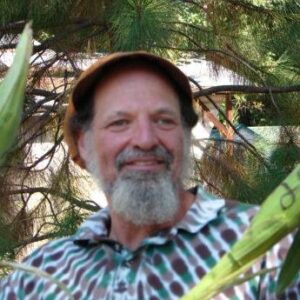
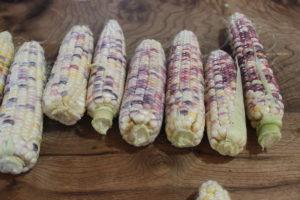
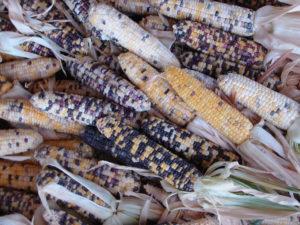
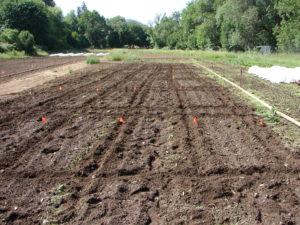

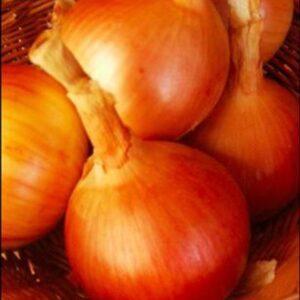
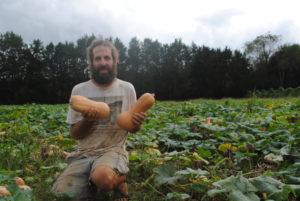
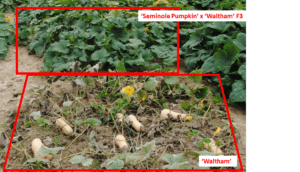




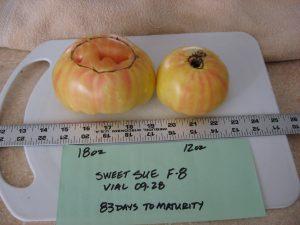
 Bill Whitson
Bill Whitson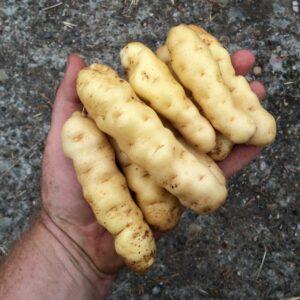
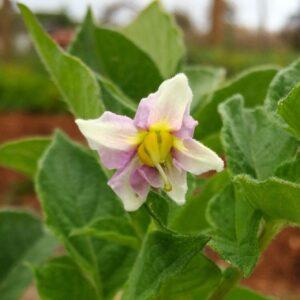
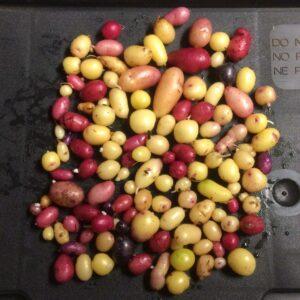
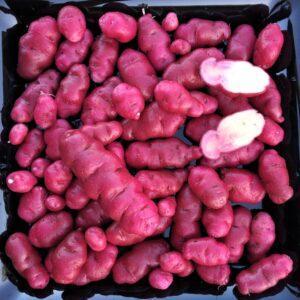
 Joseph Lofthouse
Joseph Lofthouse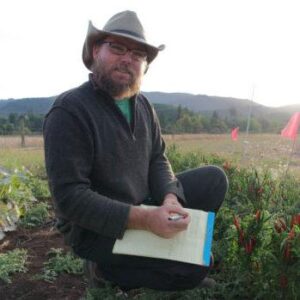
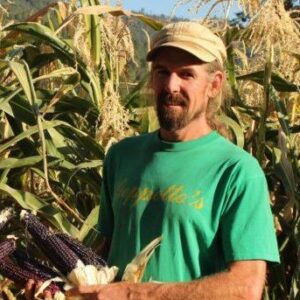
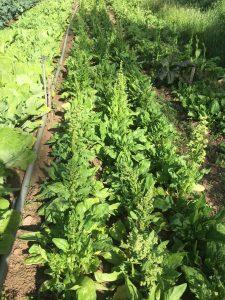
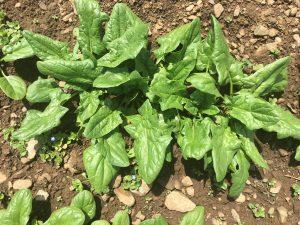
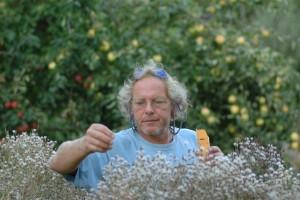 Frank Morton
Frank Morton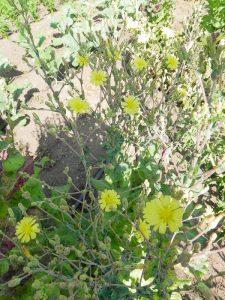
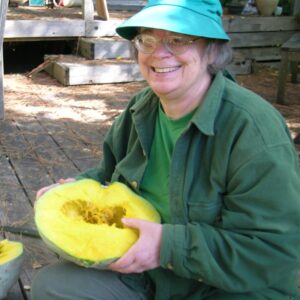 Dr. Carol Deppe
Dr. Carol Deppe